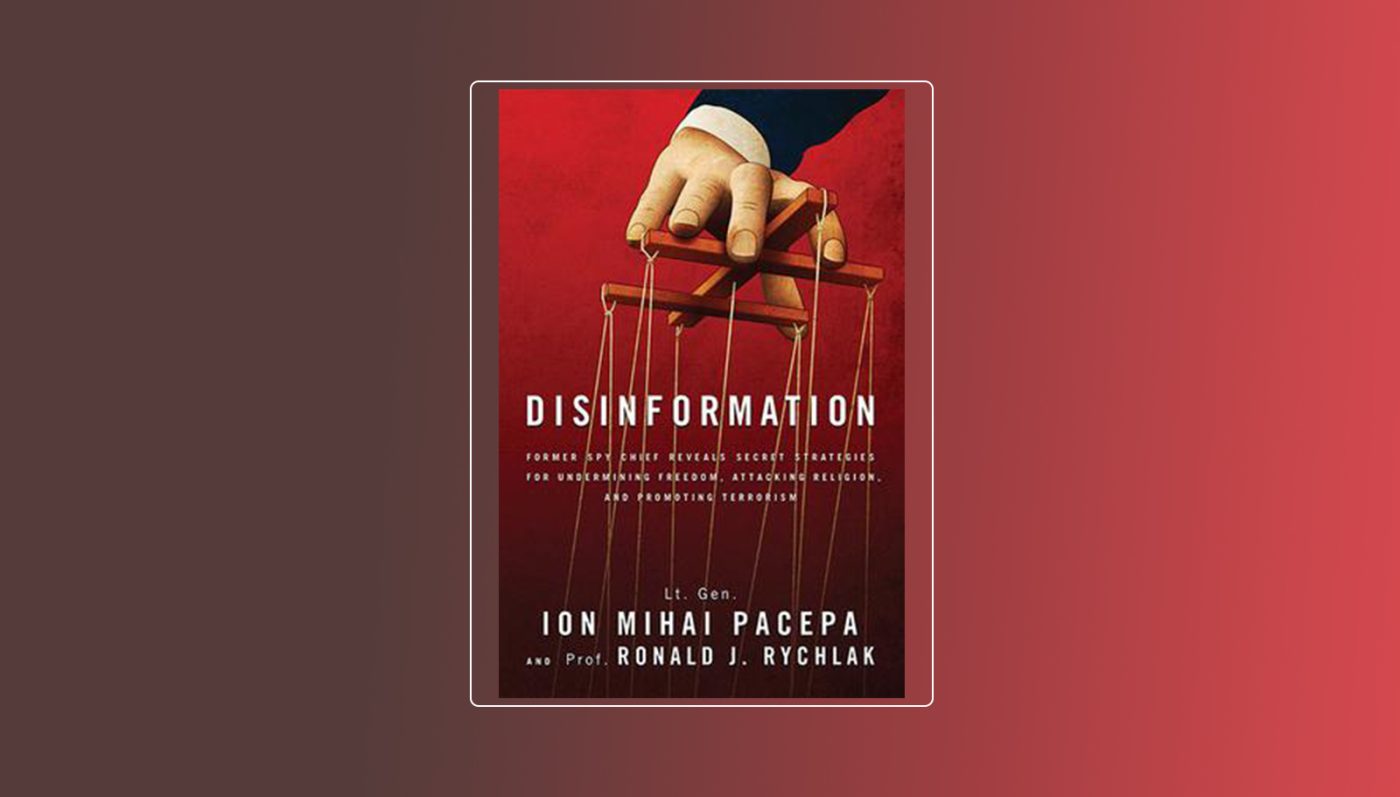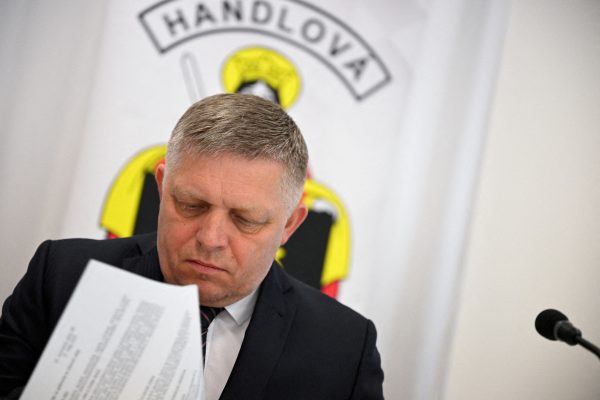Dr. Aura Sabadus is a Non-resident Senior Fellow with the Democratic Resilience Program at the Center for European Policy Analysis (CEPA). She is a senior energy journalist who writes about Eastern Europe, Turkey, and Ukraine for Independent Commodity Intelligence Services (ICIS), a London-based global energy and petrochemicals news and market data provider.
Any views expressed are her own.
Disinformation (WND books, 2013) by Ion Mihai Pacepa and Professor Ronald Rychlak
Ion Mihai Pacepa, a Romanian two-star general and the highest-ranking defector from the Eastern bloc during the Cold War, co-authored a book on disinformation published in 2013. It’s now timelier than ever.
“Dezinformatsiya,” the former KGB chief Yuri Andropov used to say, “works like cocaine. If you sniff it once or twice, it may not change your life. If you use it every day, it will make you a different man.”
The word itself hides a history of deceit. Pacepa recounts in the book that in the 1950s, DIE, Romania’s foreign intelligence service, was instructed by its Soviet counterpart to circulate a rumor that the word was derived from French, even though the French dictionary Larousse did not mention it in its 1952 edition, nor in its later 1972 version.
In fact, he says, it was a KGB-orchestrated tactic to rebrand a typical Russian ruse as a French capitalist tool targeting the “peace-loving peoples of the Soviet bloc.”
To Pacepa, who was well-positioned to write about disinformation, it resulted in a rise to the top of the inner circle of communist Romania’s disinformation machinery and working in close contact with General Aleksander Sakharovsky, the chief Soviet intelligence advisor in the country. Their work was often shot through with antisemitism, a familiar tactic for the KGB which historically deployed racist tactics, often aimed at Jews.
What follows may sound eerily reminiscent of much material now flowing across social media platforms following the October 7 Hamas pogrom inside Israel.
Stung by the dismal performance of Soviet weaponry and Soviet-trained Arab forces during the 1967 Six-Day War, Andropov decided to turn the tables on Israel, launching a campaign to hijack “Zionist” El Al civilian airliners.
He recounts how Palestinian terrorists were brought to Russia and trained at the KGB’s Balashikha special operations school east of Moscow, where they were taught to seize airplanes.
No less than 10 bombings or hijackings were reported between December 1968 and May 1978 while Andropov’s disinformation machinery worked around the clock to persuade the Islamic world that Israel and the United States intended to transform the rest of the world into a “Zionist fiefdom.”
Privately, Pacepa noted, Andropov believed the Islamic world was a “petri dish in which the KGB community could nurture a virulent strain of America-hatred grown from the bacterium of Marxist-Leninist thought.”
By 1972 Andropov launched Operation SIG, a codename for a socialist division of labor aimed at turning the Islamic world into “an explosive enemy of the United States.”
Pacepa recounts how the Romanian DIE’s sphere of influence for the operation extended to Libya, Iran, Lebanon, and Syria where Romania was involved in building hospitals, schools, and roads.
Pacepa left Romania in 1978, but he saw Russian estimates suggesting around 4,000 agents of influence were sent into the Islamic world, with an assumption that about three-quarters would ultimately prove useful.
As for his own country, Pacepa argued that the makeover of Romania’s President Nicolae Ceaușescu into a maverick communist leader who was later invited to visit the US and given a British knighthood bore the KGB’s fingerprints.
The Russian machine also worked in the opposite direction, negatively framing opponents and destroying their lives.
The Catholic Church and some of its high-profile representatives became targets of Stalin’s most effective slander machine, which accused them of being Nazi collaborators. In 1945, the Soviet dictator created SMERSH, an intelligence unit specializing in branding opponents as Nazi collaborators.
Well-respected cardinals such as Cardinal Alojzije Stepinac in Croatia or Cardinal Jozsef Mindszenty in Hungary were framed as Nazi collaborators even though, as Pacepa points out, they had offered shelter to Jews during the war and received recognition from the victims they had protected.
Pacepa’s insights provide a timely reminder that the disinformation tactics developed during the Cold War are still with us, and still sow discord and confusion in the West.
Europe’s Edge is CEPA’s online journal covering critical topics on the foreign policy docket across Europe and North America. All opinions are those of the author and do not necessarily represent the position or views of the institutions they represent or the Center for European Policy Analysis.





